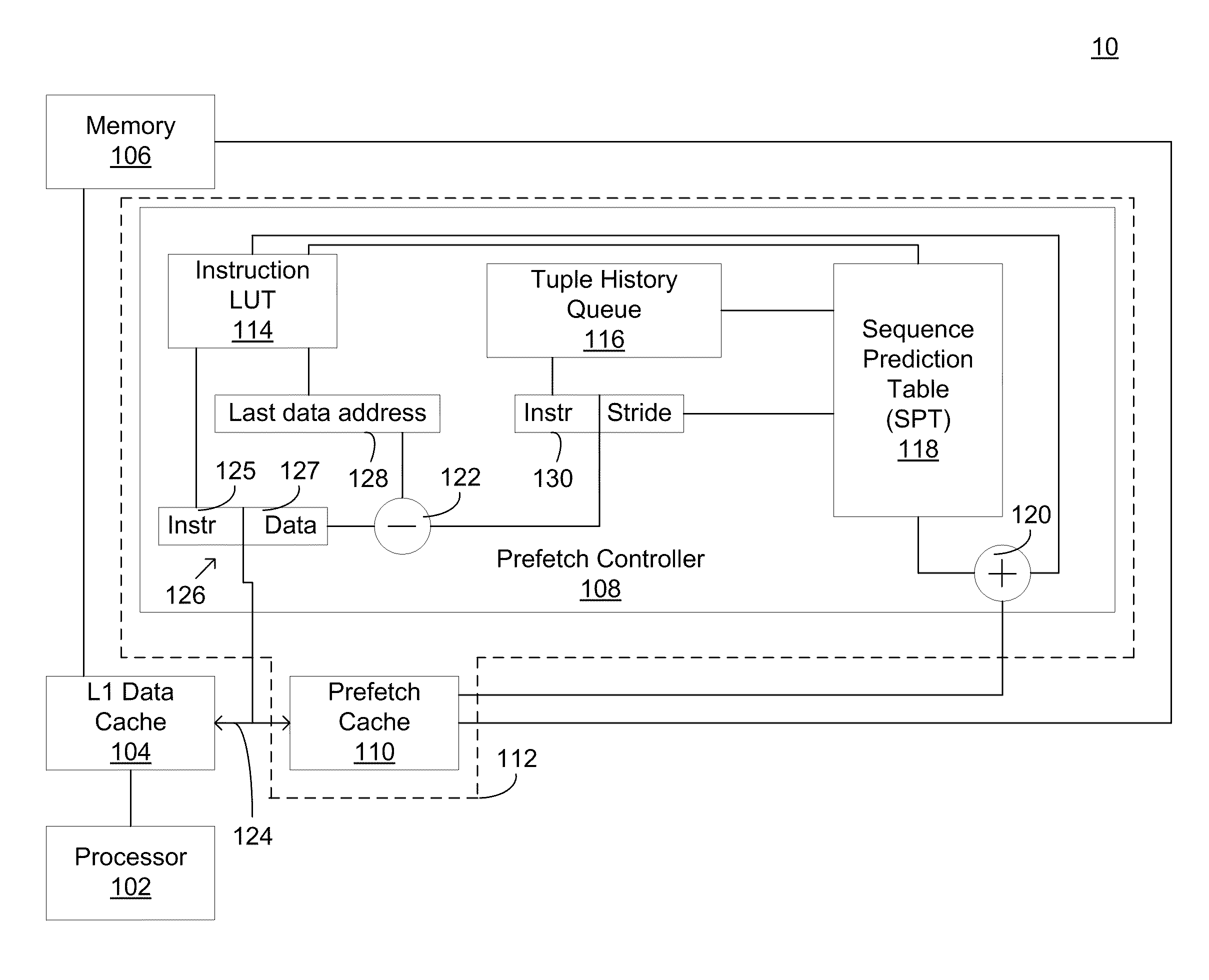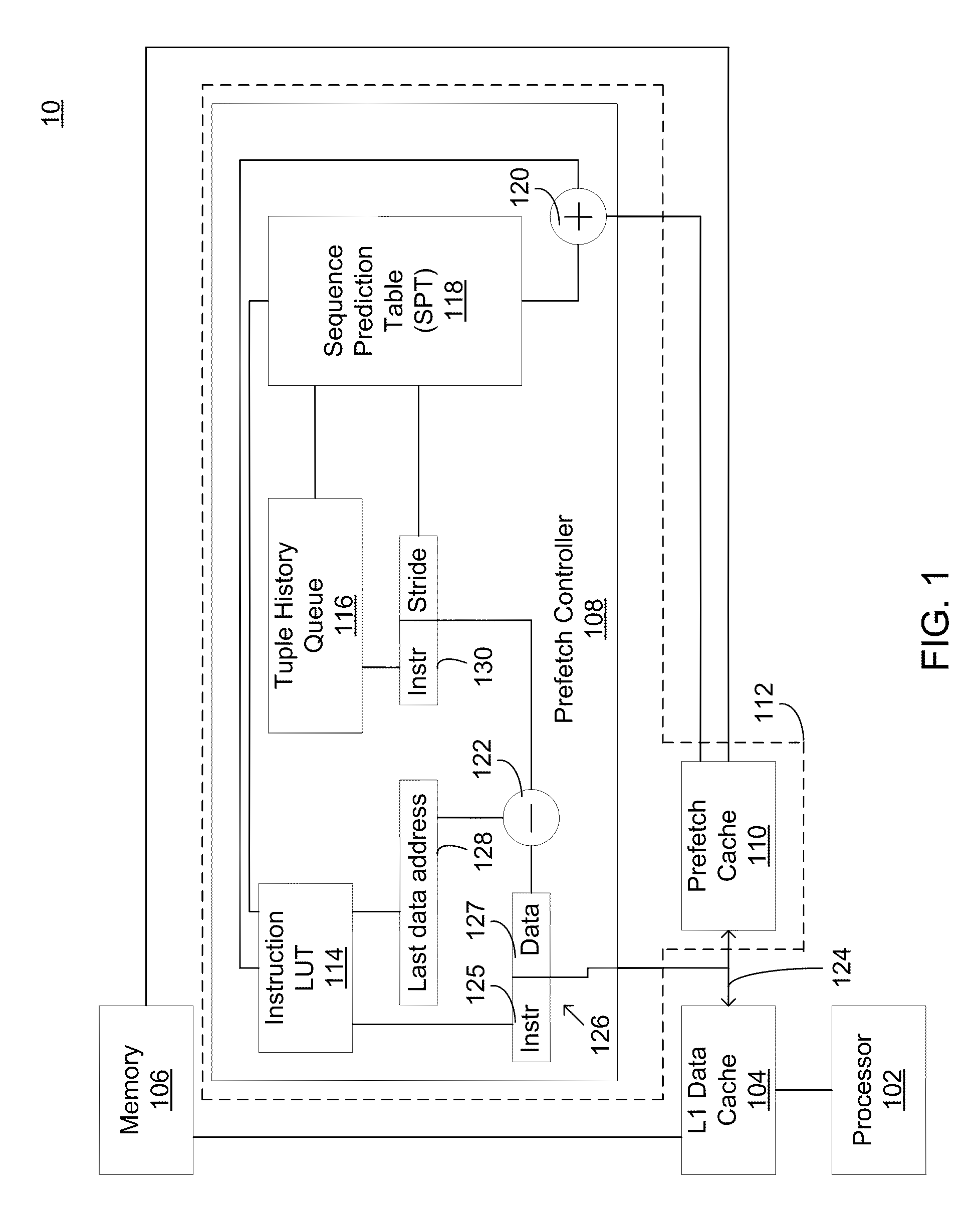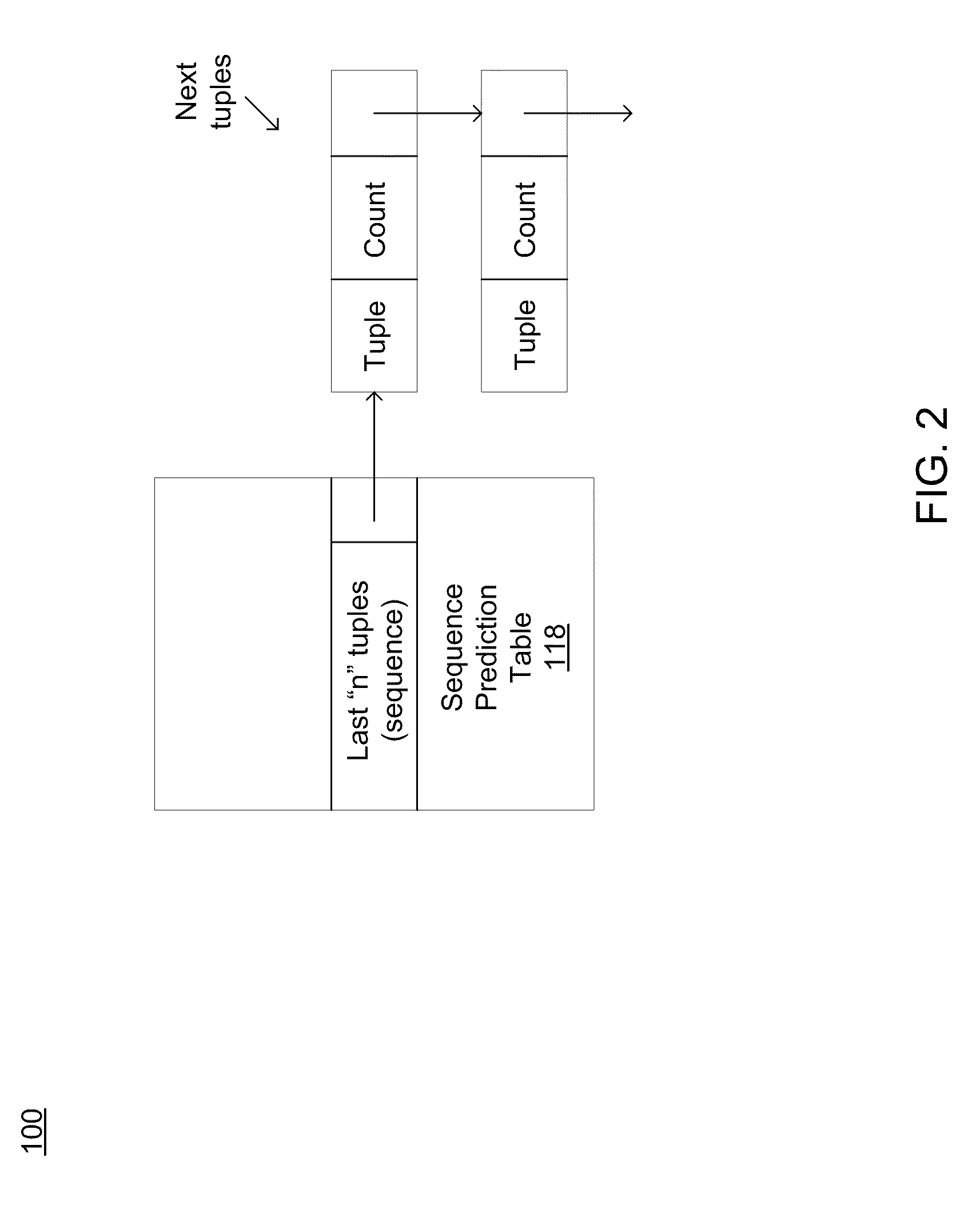System and method for prefetching data
a data system and data technology, applied in the field of system and method for prefetching data, can solve the problems of limiting the maximum theoretical performance of current and future computer systems, causing the infamous memory-processor gap, and limiting the performance of high-speed computers
- Summary
- Abstract
- Description
- Claims
- Application Information
AI Technical Summary
Benefits of technology
Problems solved by technology
Method used
Image
Examples
Embodiment Construction
[0028]Generally, the present disclosure relates to systems and methods for learning the behavior of a system and for predicting a future processor request. More specifically, the present disclosure describes how to model a particular data access as a tuple of the instruction address and its current data stride. In this way, the dynamic data access sequences described herein may be modelled as a sequence of instruction / stride tuples. These sequences may be used to record transition counts among tuples. As described in further detail below, predicting a future request may then be achieved by choosing the most likely tuple to occur given the history of the last ‘n’ tuples.
[0029]The term “tuple” as used herein may refer to a “sequence of values.” In some embodiments, a tuple may be a sequence of values having a length of two (e.g., instruction address and data stride).
[0030]Referring to FIG. 1, there is shown a prefetching system 10 in accordance with the present disclosure. System 10 m...
PUM
 Login to View More
Login to View More Abstract
Description
Claims
Application Information
 Login to View More
Login to View More - R&D
- Intellectual Property
- Life Sciences
- Materials
- Tech Scout
- Unparalleled Data Quality
- Higher Quality Content
- 60% Fewer Hallucinations
Browse by: Latest US Patents, China's latest patents, Technical Efficacy Thesaurus, Application Domain, Technology Topic, Popular Technical Reports.
© 2025 PatSnap. All rights reserved.Legal|Privacy policy|Modern Slavery Act Transparency Statement|Sitemap|About US| Contact US: help@patsnap.com



